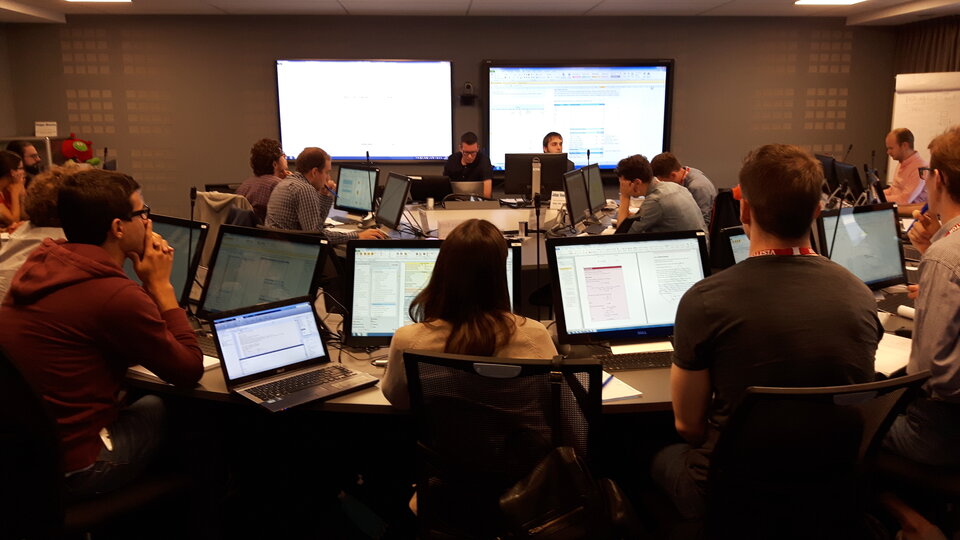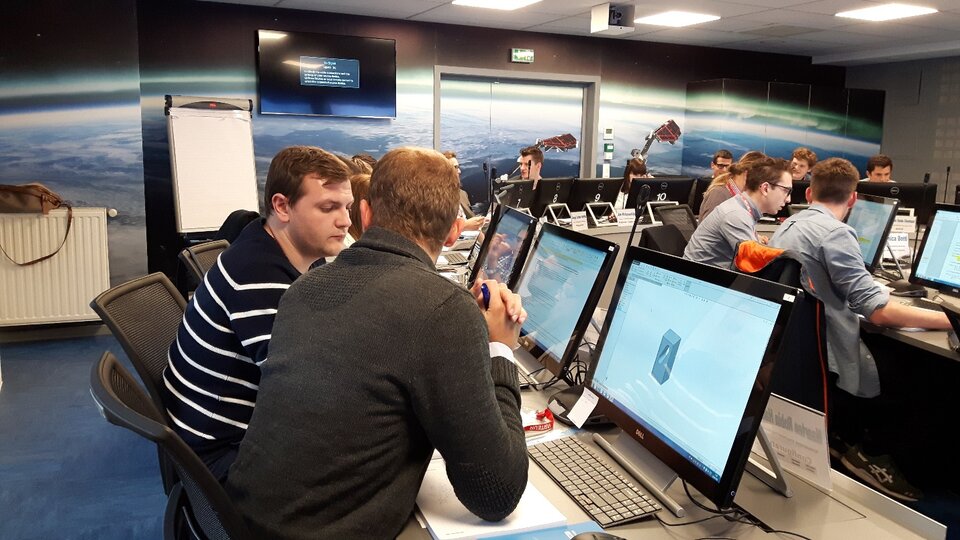A New Education Facility Teaching OCDT in ESA REDU Centre
For the past year ESA CDF and ESA Education Office have been collaborating on a new facility called the ESA Academy Training and Learning Centre (TLC). The training room, located on the ESA Redu Centre, has been set up with the intention to use, for some training courses, the Concurrent Engineering techniques and the Open Concurrent Design Tool (OCDT) developed by ESA CDF in Noordwijk. Johan Vennekens (a CDF Systems Engineer) has been working closely with ESA Education colleagues on all aspects of the room, from layout to specifications for the hardware and software on the desks as well as the traditional horseshoe shape of desk layout and the central display screens found in (almost) all CDF type facilities.
The ESA Academy Training and Learning Centre is a facility of the ESA Education Office dedicated to hosting training courses for university students. It aims at complementing the standard academic formation in space-related disciplines offered in the ESA Member and Cooperating States’ universities by transferring knowledge, know-how, and standards in all fields of ESA expertise. In this frame, ESA Education Office asked the support of ESA CDF to develop an Educational CDF to be able teach students how to use concurrent engineering to develop a satellite.

During the first ESA Academy’s Concurrent Engineering Workshop, that took place at the TLC, from 20 to 23 September 2016, 22 university students from 15 different European countries were joined by two experts from the CDF to design a satellite using the concurrent engineering approach. The Team Leader and Systems roles were taken by the ESA experts and the students filled approximately 10 technical disciplines including structures, configuration, power, propulsion, etc. There were no experts for the cost, risk and programmatics domains so these roles were filled by the team leader and system engineer.

The study case chosen for the course was for a cubesat called e-inspector with the role of observing Envisat to obtain the tumbling and stability aspects of the satellite for use as input to the e-Deorbit mission. During the course the students went through a compacted CDF study, starting out by setting requirements and producing a function tree for their subsystem and over the following days carrying out two design iterations. The study finished with a final presentation during which the design was consolidated within each domain and a final mass and power budget were obtained.

Although this was a shortened study, all the aspects of concurrent engineering normally used in the ESA CDF were employed. The students shared data between the subsystems using the OCDT, they were led by a team leader and used the spiral model to converge towards a common goal and to check the fulfillment of all mission and system requirements. Although there were only two iterations of the model, the students managed with the help of an expert from the International Space University (ISU) to create workbooks with realistic modelling and calculation sheets to reinforce their findings.
This collaboration with ESA Education Office has been very successful and this first Workshop has demonstrated the value of a “hands on” approach to concurrent engineering in a real environment with real models.
With this new facility ESA expects to see many more engineers with a background knowledge of concurrent engineering entering the space market soon.


